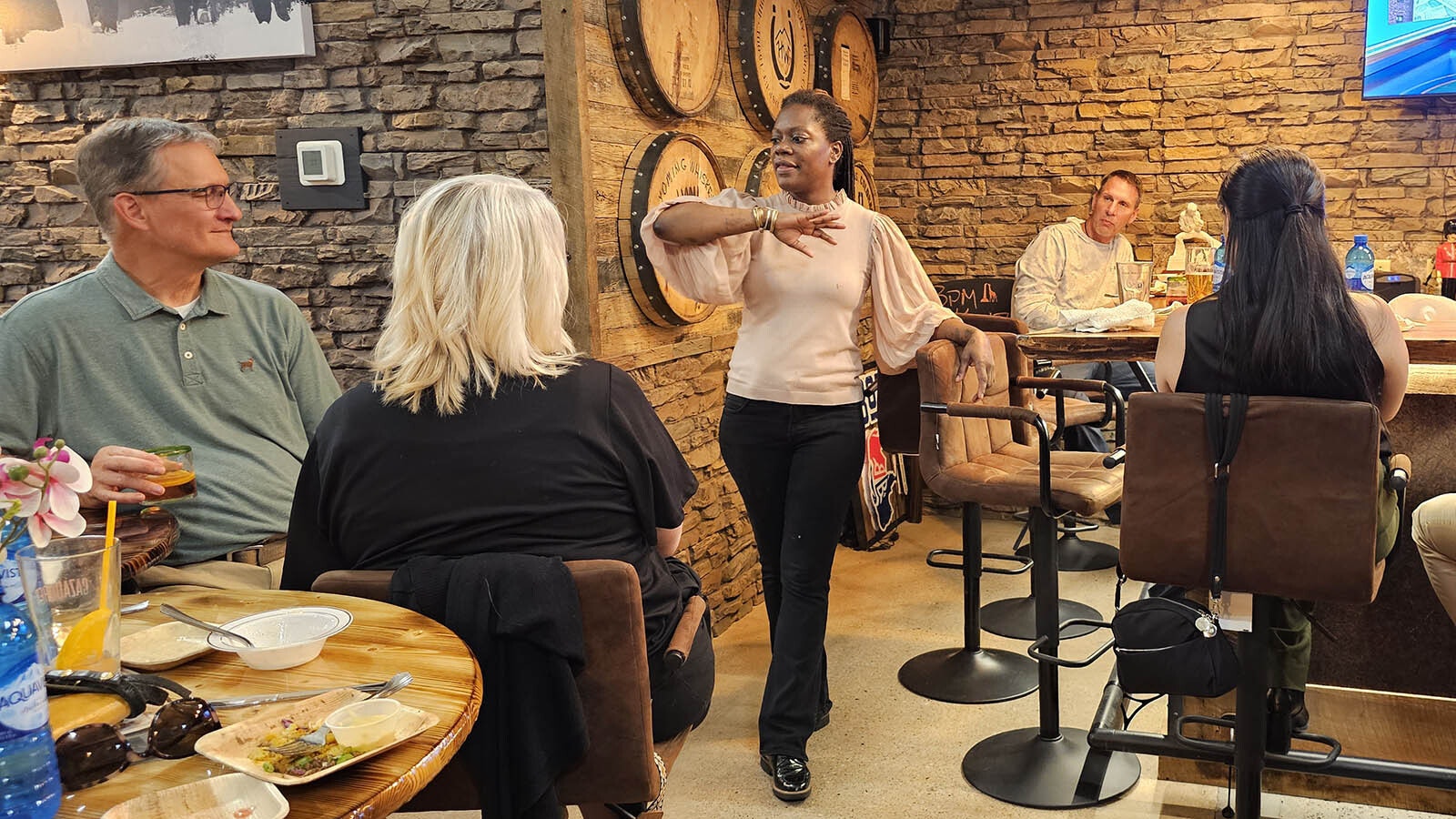There are a lot of horses and people who ride horses in Wyoming, and it’s common to see people moving their horses from place to place in trailers.
But some horses, like their wealthy owners, are world-travelers, moved across states or even internationally. These horses fly first-class (or what would classify as such for a horse).
“For sure, the Argentines send horses all the time,” said Perk Connell, president of the Big Horn Polo Club in Sheridan. “I have a girl that rides here occasionally. She was here yesterday, she has flown a few horses in from Columbia.”
The horses don’t fly directly to Wyoming, but yes, they do fly and it’s a big business.
One outfit involved in putting horses into the air is the international company IRT. IRT USA General Manager Matt Haug oversees his company’s U.S. operations out of Chicago. He said his firm occasionally will deal with a horse headed to Wyoming, but not often. But he does share the reality of how horses fly.
Just like humans, they can go first, second or third class — so to speak. And every horse that flies into the country has to go to a U.S. Department of Agriculture port for quarantine. There are four of them.
“You can fly into New York, Miami, Chicago and L.A.,” he said. “If the horse is going to, say, Wyoming, it depends on the routes. It could fly into Los Angeles or it could fly into Chicago, for instance. It would depend on what the client is looking for and where that horse was originating from — and what airline routes are available.”
There are a lot of variables — the carrier, distance, class of travel and even vet care — but air transport of a horse isn't cheap. It can cost anywhere from a few hundred dollars for a short hop to anwhere from $2,000 to $20,000 one-way for other domestic and international destinations.
Once a horse is flown into one of the U.S. ports and undergoes its quarantine, it is “90%” of the time shipped by truck and trailer to its final destination — including Wyoming, Haug said.
Cargo Routes
Horses fly between continents on regularly scheduled cargo routes that have the capacity to deal with them. Haug said his company has been flying horses for more than 50 years and began with a focus between England and Australia — IRT’s headquarters is based Down Under.
What kind of horse and where it is coming from can determine which port it arrives at. South American polo ponies go to the port in Miami, where they have to spend seven days in quarantine.
Horses coming into the country must pass USDA protocols, and blood tests are administered looking for horse-specific diseases.
When shipping a horse by air, Haug said his company purchases space on various cargo airlines and horses are led into special “air stalls” that are a lot like a horse trailer.
Those air stalls with the horses are then conveyed into the holds of huge cargo jets and positioned similar to the way a pallet carrying a dry good product would be.
Horses can fly the equivalent of “economy,” “business” or first class.
“An air stall can hold three horses. In between each will be a partition and then there is a groom compartment in front of the horses where the groom can access them and go inside and outside the air stall and give them water. Their hay nets are hung, they can eat hay while they travel,” Haug said. “And the groom goes in and out and checks on them and makes sure they get plenty of water during the trip. That would be what we call your economy.”
Air Stall Classes
The air stall with two horses and one partition equals business class. And one horse in the three-horse capable stall is a first-class ride.
As part of the IRT operation, a professional groom accompanies the horses on their flight.
“Not only are they experienced horsemen, they also are experienced in the air with horses, which can be a big difference between just being experienced on the ground,” Haug said. “You have to know how to work the equipment and how to react to a horse that might be in trouble in the air.”
Occasionally, a racehorse or a show horse owner will send a stable groom with their horse, but a professional air-trained groom remains on board.
Haug said an important factor when flying horses is to be able to identify when a horse might be claustrophobic and know what to do when that situation arises.
“There are all kinds of tricks to the trade to help,” he said. Haug said if a horse isn’t drinking, it’s important to help get its head down during the long journey.
Worldwide, with its offices in Europe, Britain, America, and Australia, IRT ships about 5,000 horses a year. Haug said once a horse lands at a port, 99 percent of time following the specified quarantine, it is trucked to its destination in the states.
Flying a horse is not cheap and ranges from $10,000 to $30,000 per horse depending on the route and the choice of economy or other options.
Horses fly for many different reasons, and in the case of the Sheridan polo club, it is for sport.
“There are a lot of people here that ship horses in and out from Argentina,” Connell said. “They are here in the summer.” Polo players need a string of ponies to play their game.

Sales And A Rodeo
Haug said the summer is also a time that stallions get shipped to Australia from the U.S. for breeding purposes and then are shipped back at the end of the year. In the fall, the Keeneland Sales of yearling thoroughbred horses in Lexington, Kentucky typically brings a pickup in flights as horses are being shipped to Ireland, England, or France.
And then there are the people competing or moving.
“It’s everything from someone who might be moving, and they want to bring their pet with them, and then you might have sport horses that people compete with as a hobby, and then you might have Olympic type horses … high level show horses that could come compete in high level competitions in the U.S.,” he said. “So, it’s very seasonal and depends on its own market.”
Haug said his firm also has been involved in bringing in horses being rescued from countries.
He is not aware of shipping horses to Europe for Western-style rodeos. But there was the time the King of Oman, decided to buy his own rodeo several years ago.
“The craziest thing we did was, and the closest thing to flying a rodeo was the King of Oman purchased a rodeo show, I think it was for his daughter’s birthday,” Haug said. “So, we would have shipped a trick horse, a bucking bronco, a buffalo, and a couple of miniature horses I believe. It was the ‘One Arm Bandit & Company Rodeo.’”
So, while flying horses first-class isn’t unusual for Sheridan’s polo ponies and horse owners in Teton County, most other Wyoming horses will have to be content riding behind trucks in their well-used trailers.
Dale Killingbeck can be reached at dale@cowboystatedaily.com.










